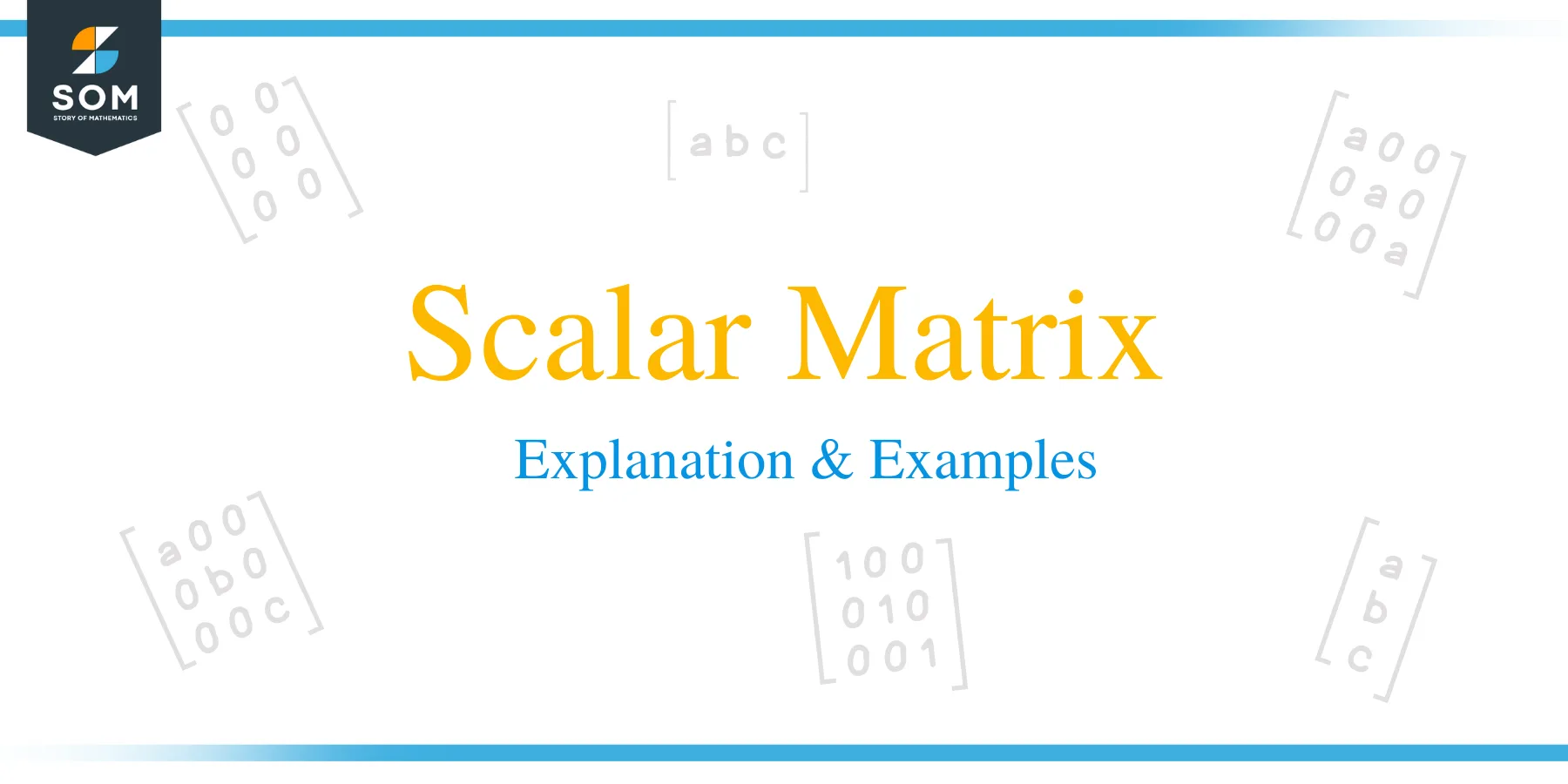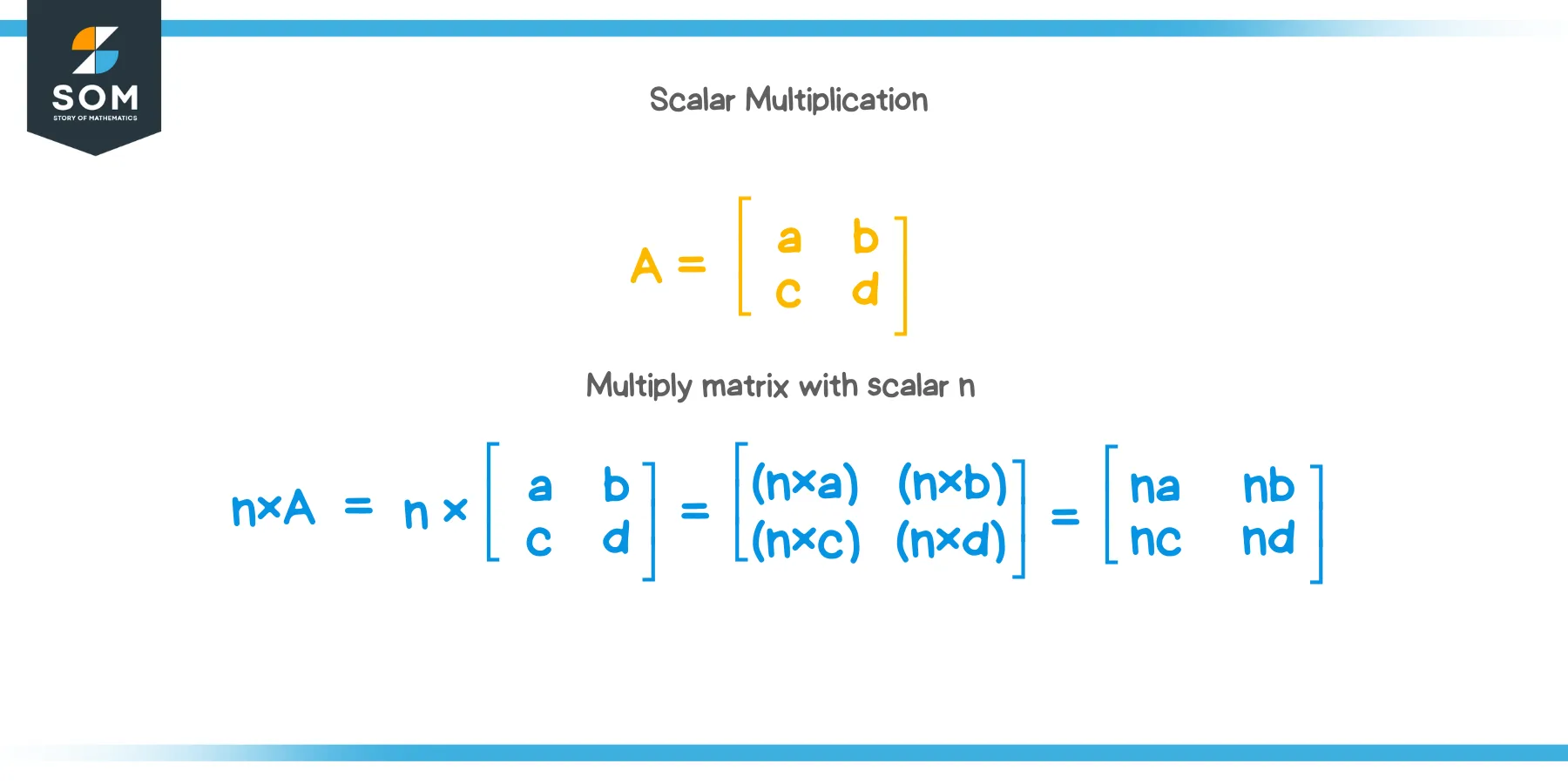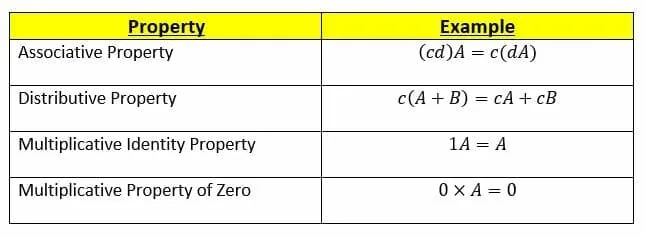- Home
- >
- Scalar matrix – Explanation & Examples
Scalar Matrix – Explanation & Examples
 Scalar matrices are the matrix equivalent of a constant number. Let us define what a scalar matrix is:
Scalar matrices are the matrix equivalent of a constant number. Let us define what a scalar matrix is:
A scalar matrix is a type of square matrix. Its off-diagonal entries are equal to $ 0 $, and the on-diagonal (principal diagonal) elements are all equal.
This article will give you a better understanding of a scalar matrix, some examples, a few of its properties, and how to multiply a matrix by a scalar. By the end of this article, we have prepared some questions so you can practice.
What is a Scalar Matrix?
A scalar matrix is a type of square matrix in which its principal diagonal elements are all equal and off-diagonal elements are all $ 0 $. It is a multiplicative constant of an identity matrix.
Note:
An identity matrix is a square matrix in which all of its diagonals are $1$-s, and the rest of its elements are $ 0 $. An example of an identity matrix is shown below:
$ I = \begin{bmatrix} { 1 } & { 0 } & 0 \\ { 0 } & { 1 } & 0 \\ { 0 } & { 0 } & 1 \end {bmatrix} $
Matrix $ I $ is a $ 3 \times 3 $ identity matrix.
You can read more about identity matrices here.
Now, let’s take a look at a few scalar matrices:
$ \begin{bmatrix} { 2 } & { 0 } \\ { 0 } & { 2 } \end {bmatrix} $
This is a $ 2 \times 2$ scalar matrix with the elements of its diagonal being $ 2 $s and the rest of the elements are zeros.
$ \begin{bmatrix} { – 3 } & { 0 } & 0 \\ { 0 } & { – 3 } & 0 \\ { 0 } & { 0 } & { – 3 } \end {bmatrix} $
This is a $ 3 \times 3 $ scalar matrix with the elements of its diagonal being $ – 3 $s and the rest of the elements are $ 0 $s.
We can have $ 4 \times 4 $, $ 5 \times 5 $, or $ n \times n $ scalar matrices as well.
How to multiply a matrix by a scalar?
There are $ 2 $ types of matrix multiplication:
- Scalar Multiplication
- Matrix Multiplication
Scalar Multiplication is when you multiply a matrix by a scalar quantity. When multiplying a matrix by any scalar $ a $, you multiply each element of the matrix by $ a $.  Consider the matrix:
Consider the matrix:
$ B = \begin{bmatrix} { 1 } & { 2 } \\ { 3} & { 4 } \end {bmatrix} $
If we want to multiply this matrix by the scalar “$ 2 $”, we simply multiply each entry by $ 2 $. Shown below:
$ 2 \times B = 2 \times \begin{bmatrix} { 1 } & { 2 } \\ { 3} & { 4 } \end {bmatrix} $
$ = \begin{bmatrix} { ( 2 \times 1 ) } & { ( 2 \times 2 ) } \\ { ( 2 \times 3 ) } & { ( 2 \times 4 ) } \end {bmatrix} $
$ = \begin{bmatrix} { 2 } & { 4 } \\ { 6 } & { 8 } \end {bmatrix} $
Below, we outline a few properties of scalar matrix multiplication.
Note: $ A $ and $ B $ are matrices of equal dimensions. $ c $ and $ d $ are scalars.

- The Associative Property states that if a matrix is multiplied by two scalars, we can multiply the scalars first and multiply that constant with the matrix. Or, we can multiply the matrix by one scalar, then multiply it again by the other scalar.
- The Distributive Property says that a scalar multiplied with the addition of two matrices can be distributed over matrix addition.
- The Multiplicative Identity Property states that multiplying a matrix by the scalar $ 1 $ results in the original matrix.
- The Multiplicative Property of Zero states that multiplying any matrix by the scalar $ 0 $ results in a zero matrix (a zero matrix is a matrix where all its elements are $ 0 $s).
Let’s take a look at some examples for this lesson.
Example 1
Identity the following matrices as either scalar matrices or not.
$ A = \begin{bmatrix} { 0 } & { 3 } \\ { 3 } & { 0 } \end {bmatrix} $
$ B = \begin{bmatrix} { – 4 } & { 0 } & 0 \\ { 0 } & { – 4 } & 0 \\ 0 & 0 & { – 4 } \end {bmatrix} $
$ C = \begin{bmatrix} { a } & { 0 } \\ { 0 } & { a } \end {bmatrix} $
Solution
- Matrix $ A $ is a $ 2 \times 2 $ square matrix. All elements besides the anti-diagonal are $ 0 $. One of its diagonals is equal with the quantity $ 3 $ each BUT that’s not the principal diagonal. So, we can’t conclude that this matrix is a scalar matrix. It’s not!
- Matrix $ B $ is a $ 3 \times 3 $ matrix with all the elements in its principal diagonal equal to $ – 4 $ and off-diagonal elements equal to $ 0 $. This is a scalar matrix.
- Matrix $ C $ is a $ 2 \times 2 $ matrix with “$ a $” in its principal diagonal and all other elements equal to $ 0 $. This is a scalar matrix as well.
Example 2
Multiply Matrix $ A $ shown below with the scalar $ – 3 $.
$ A = \begin{bmatrix} { – 5 } & { 0 } \\ { 0 } & { – 5 } \end {bmatrix} $
Solution
To multiply matrix $ A $ with the scalar $ – 3 $, we will multiply each element by $ – 3 $. Shown below:
$ A = \begin{bmatrix} { – 5 } & { 0 } \\ { 0 } & { – 5 } \end {bmatrix} $
$ -3 \times A = { – 3 } \times \begin{bmatrix} { – 5 } & { 0 } \\ { 0 } & { – 5 } \end {bmatrix} $
$ = \begin{bmatrix} { ( – 3 \times – 5 ) } & { ( – 3 \times 0 ) } \\ { ( – 3 \times 0 ) } & { ( – 3 \times – 5 ) } \end {bmatrix} $
$ = \begin{bmatrix} { 15 } & { 0 } \\ { 0 } & { 15 } \end {bmatrix} $
Now, it’s your turn. Go ahead, try to solve the following practice questions. Afterwards, match your answer with ours (shown below).
Practice Questions
- Identity the following matrices as either scalar matrices or not.
$ A = \begin{pmatrix} { – 10 } & { 0 } \\ 0 & { – 10 } \end {pmatrix} $
$ B = \begin{pmatrix} { 1 } & { 0 } \\ { 0 } & { 1 } \end {pmatrix} $
$ C = \begin{pmatrix} { – 2 } & 0 \\ 7 & { – 2 } \\ 3 & { – 7 } \end {pmatrix} $
$ D = \begin{pmatrix} { a } & { 0 } & 0 \\ { 0 } & { a } & 0 \\ 0 & 0 & { b } \end {pmatrix} $ - Multiply Matrix $ B $ shown below by the scalar $ \frac{1}{2} $.
$ B = \begin{pmatrix} { 12 } & { 0 } \\ { 0 } & { 12 } \end {pmatrix} $ - If $ D = \begin{pmatrix} { – 9 } & { 0 } & 0 \\ { 0 } & { a } & 0 \\ 0 & 0 & { b } \end {pmatrix} $ is a scalar matrix, what is the value of $ a + b $?
Answers
- Matrix $ A $ is a $ 2 \times 2 $ square matrix. The diagonal elements are $ – 10 $ and off-diagonal elements are all zeros. Thus, this is a scalar matrix.
- Matrix $ B $ is a $ 2 \times 2 $ identity matrix. But is it a scalar matrix as well? Yes! Identity matrices are a type of scalar matrices. The diagonal elements are equal, and off-diagonal elements are zeros. Thus, Matrix $ B $ is a scalar matrix.
- Matrix $ C $ is a $ 3 \times 2 $ matrix. It is not a square matrix. Immediately, we can say that it is not a scalar matrix.
- Matrix $ D $ is a square matrix with dimensions $ 3 \times 3 $. All off-diagonal elements are $ 0 $s but not all of the diagonal elements are equal. $ 2 $ elements are $ a $ and $ 1 $ element is $ b $. Thus, we conclude that this is not a scalar matrix.
To multiply matrix $ B $ with the scalar $ \frac{1}{2} $, we will multiply each matrix element by $ \frac{1}{2} $. Shown below:
$ B = \begin{pmatrix} { 12 } & { 0 } \\ { 0 } & { 12 } \end {pmatrix} $
$ \frac{1}{2} \times B = \frac{1}{2} \times \begin{pmatrix} { 12 } & { 0 } \\ { 0 } & { 12 } \end {pmatrix} $
$ = \begin{pmatrix} { (\frac{1}{2} \times 12 ) } & { ( \frac{1}{2} \times 0 ) } \\ { ( \frac{1}{2} \times 0 ) } & { (\frac{1}{2} \times 12 ) } \end {pmatrix} $
$ = \begin{pmatrix} { 6 } & { 0 } \\ { 0 } & { 6 } \end {pmatrix} $
- Given that Matrix $ D $ is a scalar matrix, we know that all the diagonal elements are equal, they are each equal to $ – 9 $. This means $ a = – 9 $ and $ b = – 9 $. Let’s find the value of $ a + b $:
$ a + b = – 9 + ( – 9 ) $
$ a + b = { – 18 } $
